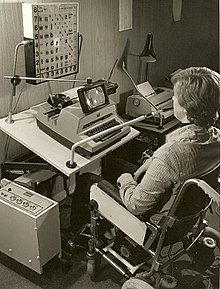
DIGITAL ELECTRONICS
In many electronic circuits, such as those in radios, the current can be of any strength. These circuits are called analogue circuits. In digital circuits, the current can have only two strengths - on and off. Digital circuits are used in devices in which the flow of electricity represents information, such as computers.
Numbers are represented in digital circuits using the binary number system. This uses only the digits 0 and 1 and so can easily be represented in electronic circuits by turning currents on or off. In the decimal system (numbers we use in everyday life: 1, 2, 3, etc.), the digits of a number represent ones, tens, hundreds and so on. In the binary system, the digits represent ones, twos, fours, eights and so on. In digital circuits, each 0 or 1 is called a bit. A four-bit binary “word” can represent decimal numbers up to 15 (one 8, one 4, one 2 and one 1).
Almost any sort of information (from simple letters to complex moving images) can be represented by numbers, which in turn can be represented in binary form. This means that any sort of information can be represented in digital electronic circuits. Computers rely on this fact to store numbers, words, pictures and sounds. They use circuits called logic circuits to process and manipulate the information.
Many types of analogue information must to be turned into digital form before they can be handled by digital circuits. This process is called digitization. For example, in a microphone, a sound, which is created by waves of air pressure, is turned into a changing electric current, called an analogue signal that represents the changes in pressure. This is turned into a digital signal by an electronic circuit called an analogue-to-digital converter. It repeatedly measures the analogue signal, turning it into a continuous stream of binary numbers.
In telephone systems, the sound of your voice is digitized, normally at the telephone exchange, before it travels across the telephone network. Before it arrives at the telephone of the person you are talking to, it is turned back to an analogue signal (which is needed to work the speaker) by a digital-to-analogue converter. The same thing happens in a CD player, because sound is recorded in digital form on a CD.
The pixel code is stored as a binary number, which, inside the computer, exists as electrical signals. 1 means an electrical pulse, 0 means no electrical pulse.
DIGITAL PICTURES
Anything that appears on a computer’s monitor is called computer graphics. These can be as simple as plain white text on a black screen, or as complicated as animated three-dimensional images. Whatever the graphics are, they are made up of small coloured squares called pixels (short for picture elements) in a grid pattern.
The concentration of pixels in a picture is called resolution. High-resolution graphics can be viewed on a large screen without the pixels being visible. Graphics can have a different range of colours, too. In eight-bit graphics, each pixel is represented by eight bits, and so can be any one of 256 colours.




 ELECTRONICS
ELECTRONICS  There are dozens of different electronic components, but the most common ones are resistors, capacitors, diodes and transistors. A resistor restricts the flow of current in a circuit. Capacitors store electric charge. Current can flow into them until they are full, and out of them until they are empty. A diode allows current to flow one way but not the other. A transistor can act as a switch or an amplifier. It has three connections. The current flowing between two connections is controlled by a tiny current flowing into the third.
There are dozens of different electronic components, but the most common ones are resistors, capacitors, diodes and transistors. A resistor restricts the flow of current in a circuit. Capacitors store electric charge. Current can flow into them until they are full, and out of them until they are empty. A diode allows current to flow one way but not the other. A transistor can act as a switch or an amplifier. It has three connections. The current flowing between two connections is controlled by a tiny current flowing into the third.